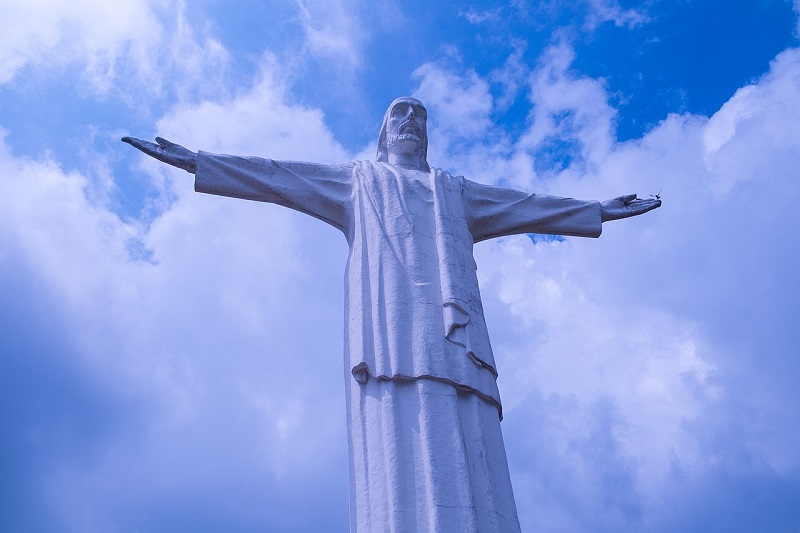ISABEL RUBIO ARROYO | Tungsteno
Standing 30 metres high, Christ the Redeemer in Rio de Janeiro is one of the New Seven Wonders of the Modern World and one of Brazil's top tourist destinations. Among Venezuela's most iconic structures is the 46-metre, 1,200-tonne Monument to the Virgin of Peace. But there is another large monument to Jesus in Latin America that echoes these two, perched imposingly on a hilltop in Colombia: Cristo Rey, or Christ the King.
A 464-tonne megastructure
This megastructure is located at the top of the Cerro de los Cristales, a hill southwest of the city of Cali, 1,440 metres above sea level. The Jesuit priest José María Arteaga led the project from 1949. He raised funds from the departmental assemblies to make it a reality. The Italian sculptor Alideo Tazzioli was commissioned to bring life to this imposing figure, which stands 26 metres tall and weighs 464 tonnes. Each of its arms alone weighs 25 tonnes.
Its structure is mainly made of reinforced concrete and was designed to withstand any tremors. Its construction required 36 tonnes of steel, 1,050 sacks of cement and around 100,000 litres of water, according to the Colombian website El País. Those responsible for the project chose guadua, a type of bamboo native to Latin America, as the main material for the construction of the scaffolding.
Cristo Rey stands on the green slopes of Cerro de los Cristales. Credit: Ecologia Digital Films
A symbol of peace
Cristo Rey was inaugurated in 1953 during the commemoration of the 50th anniversary of the end of the Thousand Days’ War. “Although the war ended in 1902, it was on 25 October 1953, 51 years later, that the monument was officially inaugurated as a sanctuary in the middle of the Cerro de los Cristales,” says the Mayor's Office of Cali. That day will forever be remembered by the people of Cali as a historic one. “Monsignor Caicedo Téllez, Bishop of Cali, celebrated Mass in front of a crowd of 30,000 people, according to journalistic estimates," the Colombian website reports.
Since then, Cristo Rey de Cali has been a place of pilgrimage for thousands of people. “It is one of the most representative icons of the city, embodying its history and culture. It is a tourist attraction and also a symbol of peace, because it was a monument built to celebrate the end of the Thousand Days’ War,” said Arabella Rodríguez, former secretary of tourism for Cali, in 2017.
The monument has become a symbol of peace. Credit: Gobernación del Valle del Cauca
The Christ that embraces Cali
Cristo Rey is not only a religious monument, but also a tourist attraction that has undergone a remodelling in recent months. “New tourist spots, elevated paths, viewpoints, commercial premises, restrooms, water recycling tanks, a prepared food area and an experience area have all been added,” says the Mayor's Office of Cali.
The monument is located at the top of a hill, which can be reached via stairs. The Governor's Office of Valle del Cauca says that, once at the top, “this is the best viewpoint for visitors to appreciate the city.” “If you turn around, on the other side, you will see an imposing mountain range with magnificent vegetation,” it says. But perhaps the most striking view is when you look up: “Christ seems to extend his arms to embrace Cali and its inhabitants, offering them protection.”
Tungsteno is a journalism laboratory to scan the essence of innovation.
